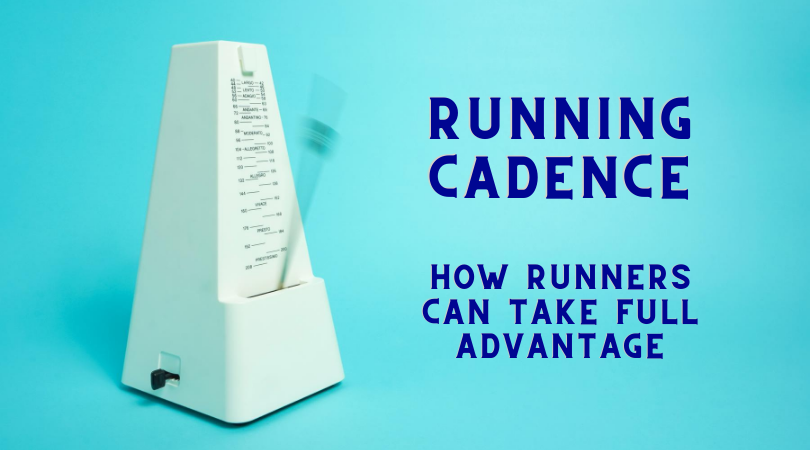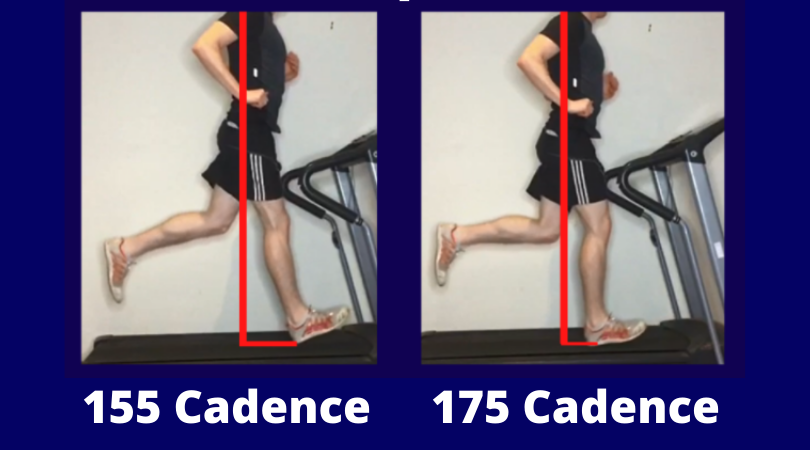Running Cadence: How to take full advantage

What is running cadence?
Whether you need to adjust it or not, every runner should at least know what their running cadence is. This one number can be a game changer for some runners because it can generate a more efficient running technique. Simply put, your cadence is the number of steps that you take per minute while running. For a recreational runner, this number is not influenced by speed, and you will naturally fall into a running rhythm that feels best for you. On average a runner would take about 160 steps per minute. I recorded an entire podcast episode on the Run Smarter Podcast explaining the benefits of running cadence which you may want to listen to.
Why is cadence so important?
If we visualize different runners travelling at the same speed side-by-side with different running cadences, it can help illustrate its importance. Firstly, those who run with a lower cadence compensate by taking bigger strides. Additionally, we see the same running travel up and down at larger amplitudes. This will produce different loads through the body on impact and can accumulate higher forces compared to a runner with a high cadence taking smaller, quicker steps.
The team at The Running Clinic have an extraordinary youtube video explaining this concept which you can view here.

What effect does cadence have on my running?
Evidence has shown that increasing your cadence by only 5% can reduce running loads through your knee by 20%. In fact, Schubert et al, conducted a systematic review in 2013 and found that increasing your cadence by 5-10% “appears to reduce the magnitude of several key biomechanical factors associated with running injuries”
The same study which compiled 10 published reviews found consistent evidence that an increased stride rate resulted in:
- Decreased center of mass vertical excursion
- Improved ground reaction force
- Decreased shock attenuation
- Better energy absorption at the hip, knee, and ankle joints.
And if the vast majority of running injuries are caused by overload, you can understand how powerful this adjustment can be. Ideally, a higher cadence will reduce an ‘overstride’ pattern, which has been linked to an increased risk of injury. Compiling all of these benefits and what is left is a safer, more efficient run.

How do you calculate your cadence?
Most running devices with accelerometers will automatically calculate your cadence. There are also smartphone apps like Runcadence that make the process very easy. There are also free metronome apps that you can use mid-run by simply touching the screen every step you take. You will only need to spend 10 seconds or so calculating your cadence once you have warmed up and found a nice running rhythm.
Do I need to change my cadence?
Once you know your natural running cadence, the next step is to determine if it needs to be adjusted. So let’s break this down into sections:
Is your running cadence less than 160?
If this is the case then you may benefit from increasing your cadence. You can take your initial score and increase it by 5-10%. For example, if my score was originally 158 and I add 7.5% I am left with a total of 170. So my next step in the process would be to set my metronome at 170 and attempt to step to every beat. This might feel weird at first but eventually you should find a nice rhythm. If it’s too much of an adjustment, try increasing your cadence by only 5%.
Is your running cadence between 160 & 170?
This is a common zone for runners and in most cases, a relatively safe zone. Increasing your cadence isn’t necessary unless you need to shift your load or want to work on efficiency. For example, if I originally scored 165 I could still increase my cadence by 5% and get to a total of 173. This might be direseable if I wanted to reduce the load on my knees, shins & plantar fascia because of injury or injury prevention. .
Is your running cadence greater than 170?
A cadence of 180 used to be considered the ‘magic number’ for running cadence. Evidence now shows that anywhere between 170-185 is considered a great running cadence. If you score above 180, increasing your cadence is rarely recommended and the efficiency benefits often diminish.

The Cadence Conclusion
So in conclusion, Increasing step rate may prove beneficial in the prevention and treatment of certain running injuries and seeking the guidance of a qualified professional is advised. Achieving this will reduce any over-stride running patterns and decrease unwanted braking forces. Even though a runner will result in taking more steps, there is clear evidence to show the overall cumulative load is reduced and can reduce the likelihood of load dependent injuries like tibial stress fractures.
Relevant Podcasts:
The Run Smarter Podcast: Watch your step
Addressing common running misconceptions 2: Running Form
Running Technique insight Chris Bramah
References:
Amy G. Schubert, Jenny Kempf & Bryan C. Heiderscheit. Influence of Stride Frequency and Length on Running Mechanics: A Systematic Review. (2013)
Jenevieve L. Roper et al. The effects of gait retraining in runners with patellofemoral pain: A
randomized trial (2016).
Rachel L. Lenhart et al. Increasing Running Step Rate Reduces Patellofemoral Joint Forces (2014).
John D. Willson et al. Effects of step length on patellofemoral joint stress in female runners
with and without patellofemoral pain (2014)
Jean-Francois Esculier et al. Is combining gait retraining or an exercise programme with education better than education alone in treating runners with patellofemoral pain?A randomised clinical trial (2017).
